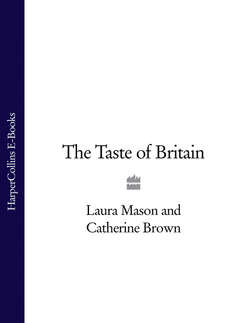Читать книгу The Taste of Britain - Hugh Fearnley-Whittingstall - Страница 322
WHITSTABLE OYSTERS ARE SLOW-GROWING WITH HEAVY SHELLS; THEY MAY WEIGH UP TO 240G AND BE UP TO 11CM LONG. HISTORY:
ОглавлениеThe first people to exploit the native oyster, Ostrea edulis, on a large scale in this part of Britain were the Romans. The shellfish were even exported to Rome itself (Wilson, 1973). In the Middle Ages, the Colchester fishery was granted a charter in 1189.
There were many other beds of native oysters available to the British, Poole in Dorset and Helford in Cornwall to name but two. Trade between the coasts and consumers inland is documented readily from medieval books of account. But there is little doubt that the most important production was concentrated on the Thames estuary: Colchester on the north side and Whitstable on the south. The ‘Company of Free Fishers and Dredgers’, an association of oyster fishermen from Whitstable, has a history stretching back over 400 years. At their peak, there were more than 800 principals in the fisheries (Neild, 1995). One reason for their pre-eminence was the existence of London on their doorstep, with easy water transport to link them to Billingsgate, the principal point of sale. One has only to read diaries, correspondence and printed accounts to appreciate the scale of the business. Oysters were an important food of the common people in London: the Mayor regulated the price of oysters from at least the fifteenth century, and an early reference to ‘Colchesters’ from 1625 confirms the identity of the town with the product.
Oysters were apparently unlimited until a moment in the 1860s. The development of beds off the Sussex coast in the English Channel had caused the price to fall through oversupply, but these were soon exhausted, and disease and a sequence of bad weather combined to cause a shortage elsewhere. The oyster ceased to be food of the masses and became a costly delicacy.Problems first encountered by the Victorians were never properly addressed and the native oyster beds have suffered acute decline in the intervening years. Fears of catching typhoid due to unhygienic storage wiped out demand before the First World War; catastrophic seasons, such as the winter of 1962-3 which killed 95 per cent of marketable stocks; disease; and finally price competition from oyster varieties that were more easily farmed, or more cheaply gathered, were the most potent causes.
Seasalter, the company based in Whitstable which currently does most work on oyster culture in the Thames estuary, has a history which stretches back to the mid-nineteenth century. The fishery of Whitstable did not escape the trials endured by other sites, but recovery has been put in hand. The beds were re-stocked with young natives from other locations, and Pacific oysters were introduced in the 1960s. Both varieties are now farmed at Whitstable. In Colchester, commerce was interrupted by the crises described above, but Colchester Oyster Fishery Ltd was established in 1966 to restore the beds. Stocks were hit badly by the parasite Bonamia in 1982 but are slowly recovering. Whitstable Oysters have been awarded Protected Geographical Indication (PGI).
